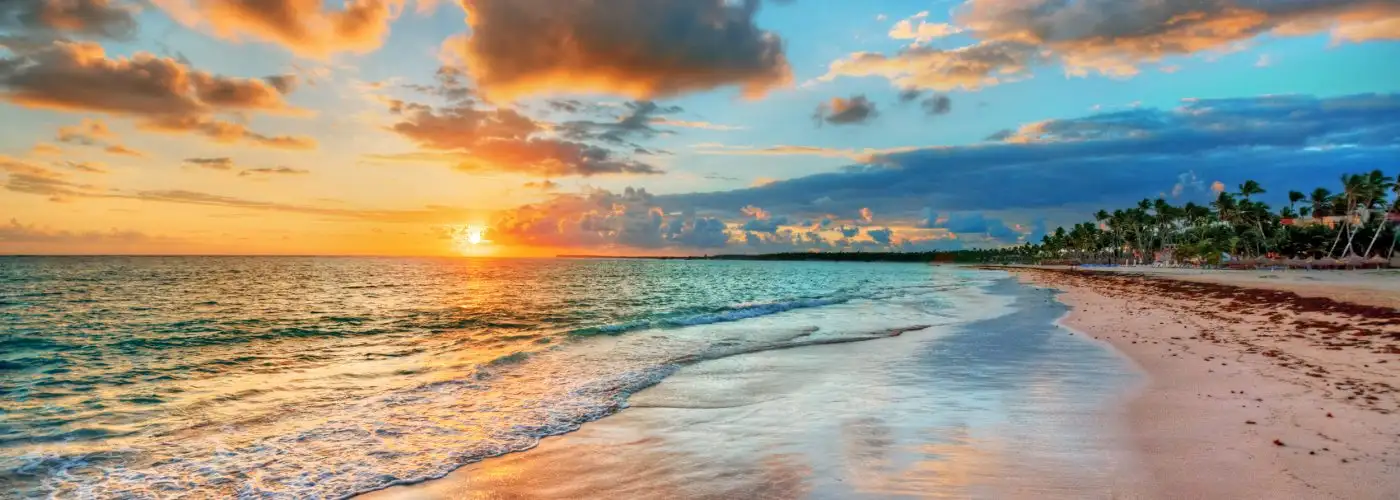Whether you’re in the mood for sun and sand, old Spanish forts, or boatloads of succulent roast pork, you can always get your fix in Puerto Rico. A U.S. territory since 1898, Puerto Rico is proudly and exuberantly different than anywhere on the mainland. And that’s why so many people come to visit these Spanish-speaking islands where you don’t even need a passport to visit.
Puerto Rican culture is animated by a sort of hybrid vigor, a product of the intermixing of indigenous Taino Indians, Spanish settlers from Andalusia and the Canary Islands, and freed West African slaves. The result is a freewheeling kaleidoscope of Afro-Latin musical traditions and cocina criolla, or creole cooking.
It would be easy to spend an entire trip just on Puerto Rico’s main island, Borinquen. But its smaller sisters are worth a visit, too. The tourist-friendly islands of Culebra and Vieques lie to the east. And for the more adventurous traveler, the remote, essentially uninhabited islands of Mona, Desecheo, and Monito—which have been called the Galapagos of the Caribbean—lie to the west.
Whatever your speed, you’ll quickly discover that the islands of Puerto Rico are full of little things that will take your breath away. Here are the best things to do in Puerto Rico.
What to Do in Puerto Rico
Image Gallery
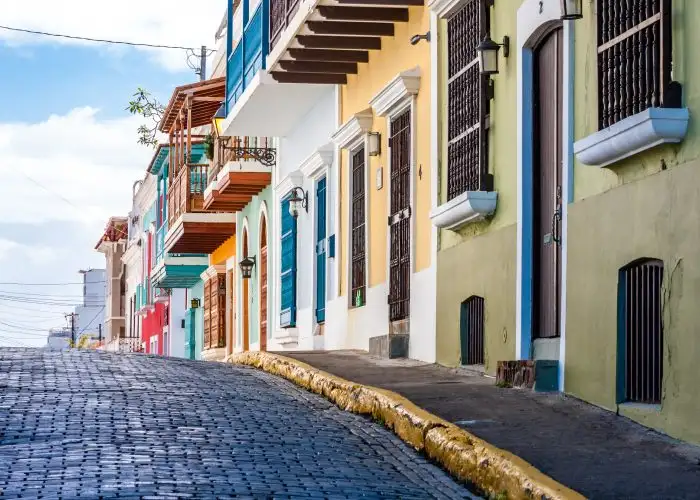
The walled city of Old San Juan, founded in 1519, gives a taste of Puerto Rico’s legacy as a Spanish colony. In its day, San Juan was the most important port in the Caribbean, from which treasure-laden galleons set sail back to Spain.
The old city’s most prominent feature is El Morro fortress, a stony redoubt of Spanish power—now a UNESCO World Heritage site—with a commanding presence on a promontory at the edge of the Atlantic. A sweeping, grassy esplanade is the perfect place to fly a kite, and a bayside promenade known as Paseo de la Princesa offers leisurely strolls along the old city wall from the cruise ship pier to the imposing San Juan Gate.
The colorful Spanish Colonial-style buildings call to mind New Orleans’ French Quarter, and its streets are paved with adoquines—strikingly blue and locally cherished bricks that were specially cast from furnace slag in Liverpool more than a century ago.

The walled city of Old San Juan, founded in 1519, gives a taste of Puerto Rico’s legacy as a Spanish colony. In its day, San Juan was the most important port in the Caribbean, from which treasure-laden galleons set sail back to Spain.
The old city’s most prominent feature is El Morro fortress, a stony redoubt of Spanish power—now a UNESCO World Heritage site—with a commanding presence on a promontory at the edge of the Atlantic. A sweeping, grassy esplanade is the perfect place to fly a kite, and a bayside promenade known as Paseo de la Princesa offers leisurely strolls along the old city wall from the cruise ship pier to the imposing San Juan Gate.
The colorful Spanish Colonial-style buildings call to mind New Orleans’ French Quarter, and its streets are paved with adoquines—strikingly blue and locally cherished bricks that were specially cast from furnace slag in Liverpool more than a century ago.
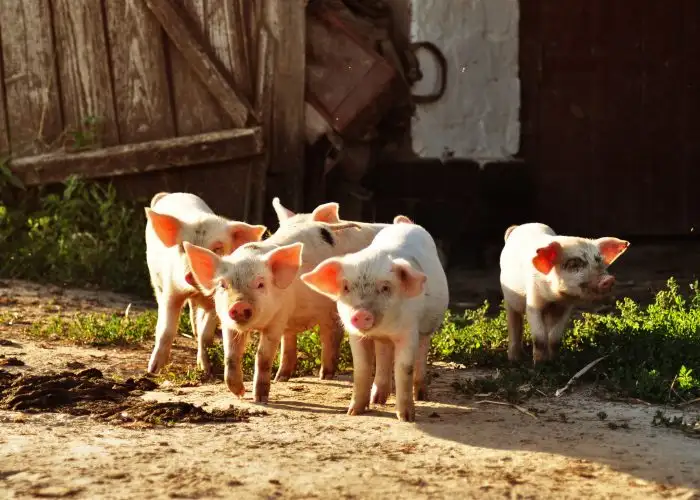
On La Ruta del Lechon, it’s not the destination but the journey that matters—and that journey is paved with pork. Highway 184, the route to the small town of Guavate, some 35 miles south of San Juan, is packed with open-air lechoneras that roast whole pigs every weekend.
The fabled streamside El Rancho Original, located at the 27.5-kilometer mark, claims to have been the first of the bunch. Order your pig by the pound, crack open an ice-cold Medalla Light, and savor a plateful of pork accompanied by other traditional Puerto Rican dishes like fried plaintain and arroz con gandules (rice with pigeon peas).
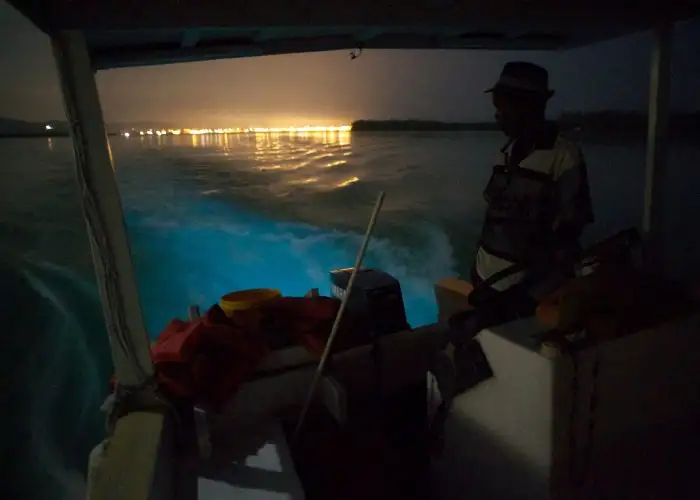
Several bays in Puerto Rico are populated by Pyrodinium bahamense, a microorganism that glows brilliant blue when the water is disturbed. The most impressive of the lot is Mosquito Bay on the island of Vieques, where local tourist outfits offer nighttime kayak tours that literally light up the water. Laguna Grande in Fajardo and La Parguera in Lajas, both on the main island of Borinquen, also have good shows.
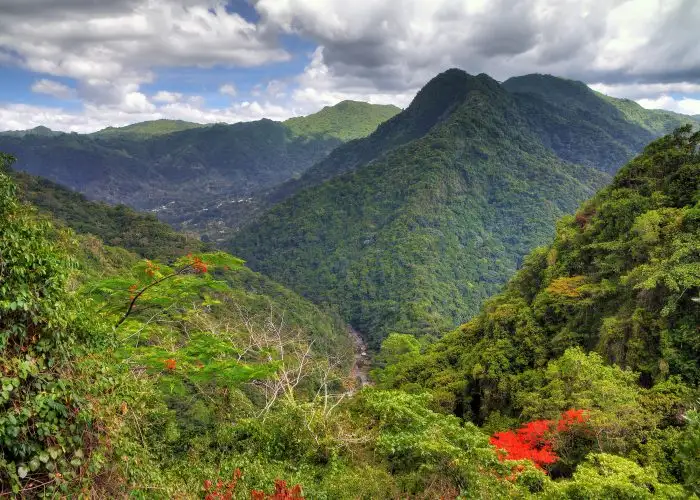
The only tropical rainforest in the U.S. national forest system, El Yunque is a place apart. On the northeast corner of Borinquen, El Yunque is smacked by wet trade winds that gather moisture as they barrel some 3,000 miles west from Africa.
The forest averages some 200 inches of rain per year, and all that water translates into a tropical rainforest wonderland where innumerable waterfalls plunge into rocky pools. Hikers who make it to El Yunque’s roughly 3,500-foot high point, El Toro, are rewarded with awesome Caribbean rainforest panoramas.
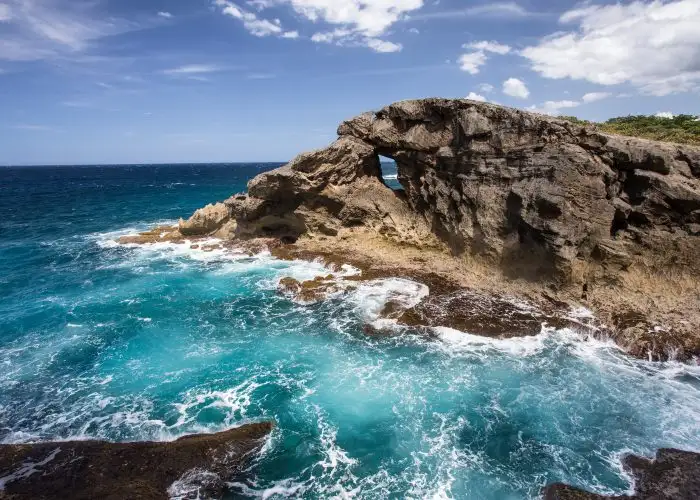
In Arecibo, roughly 40 miles west of San Juan, a rocky seaside trail leads to an open-roofed cavern full of petroglyphs carved by Taino Indians in Pre-Columbian times. This is full-on Puerto Rican culture: You’ll need to pay a local a couple of dollars for a spot to park your car, and negotiate an Indiana Jones-style ladder down into the cave.
But the journey will put you face-to-face with some of the oldest and most elemental images of Puerto Rico, and once you clamber back topside you won’t have to look far to find a frosty Medalla.
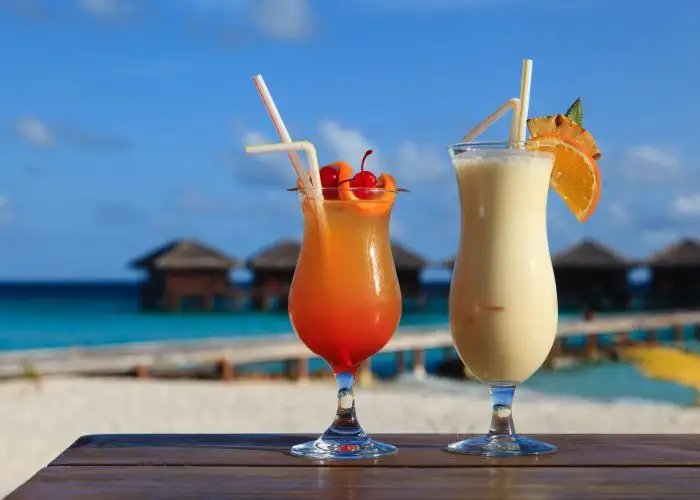
Some 70 percent of the rum found in U.S. liquor stores originates in Puerto Rico. The Bacardi distillery in Cataño, a San Juan suburb, is a veritable rum-burbling font, cranking out more than 26,000 gallons per day. For $45, Bacardi will happily give you a tour of the distillery and its ostentatiously named “Cathedral of Rum.”
Among Puerto Ricans, a family of rums called Don Q is the local favorite; sadly, though, the distillery, in Ponce, does not currently give tours. But if you’re feeling truly adventurous, take note: Puerto Ricans have a great moonshining tradition, and it’s possible to seek out variously legal grades of pitorro, or hillbilly rum, which can run to a fiery 160 proof.
The small city of Añasco, on Borinquen’s west coast, has a reputation for being a steamy hotbed of pitorro. Pitorro has long been associated with the much-loved notion of the jibaro—the self-reliant, moonshining Puerto Rican hillbilly. You may not have mud on your boots or a straw pava on your head, but knocking back a few stiff toots will show that you’re a jibaro de corazon.
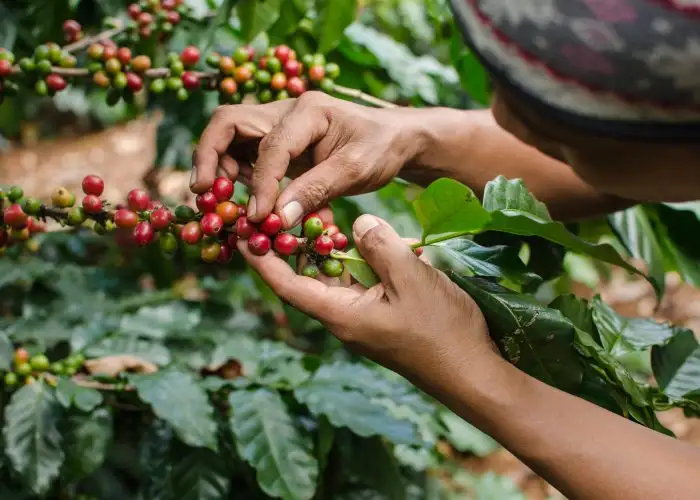
There’s no better way to shake off the aftereffects of pitorro than a bracing cup of coffee. Luckily for you, Puerto Rico offers several coffee plantations to visit as day trips, like Hacienda Buena Vista, just outside Ponce on the southern coast; or for overnight, bed-and-breakfast style stays like Pomarrosa Coffee Lodge a bit farther north.
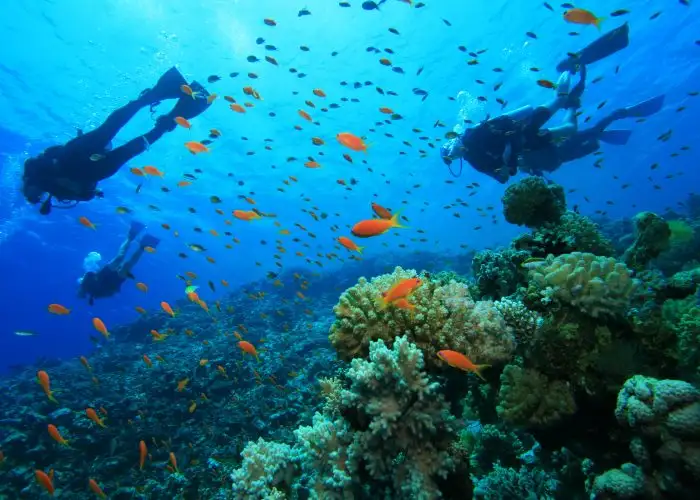
If SCUBA’s your jam, Puerto Rico is lousy with good dive spots—made all the more interesting by the fact that the commonwealth is perched on the confluence of the Caribbean and the open Atlantic. La Parguera, on the south side of Borinquen, offers lots of opportunities in a natural reserve. More remote sites include Cayo Raton, off Culebra Island, with massive amounts of fish.
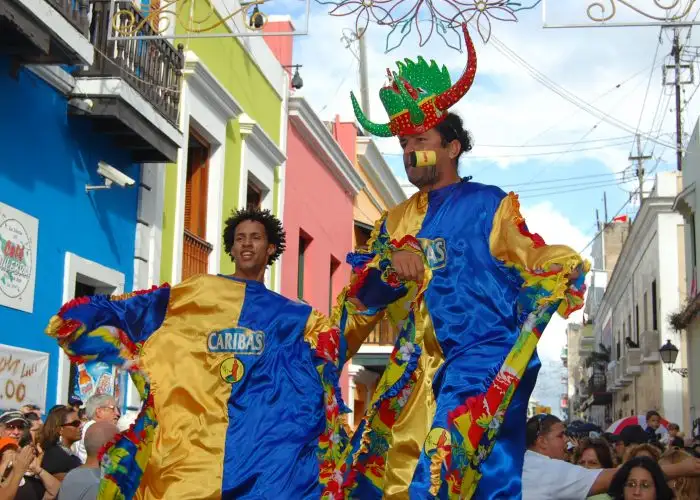
Puerto Ricans know how to party, and its people pull out all the stops at Christmas. The parranda is an island tradition that sees groups of people making surprise visits to friends’ houses late at night to serenade them with traditional Christmas songs. In return, the homeowner feeds them (the traditional Puerto Rican Christmas meal is lechon a la vara, or spit-roasted pig), and makes sure they’re amply provided with libations. The entire group then carries on to the next victim.
The Christmas season in Puerto Rico extends well into January, and for tourists, the main event is the Fiestas de la Calle San Sebastián, typically held on the third weekend in January. Known as La SanSe, the festival is centered on San Sebastián street in Old San Juan. A parade of the Cabezudos—people with oversized papier-mache heads representing various folk and historical figures—kicks off four days of music, dancing, and revelry that’s been compared to an only-slightly-more-wholesome version of Mardi Gras.
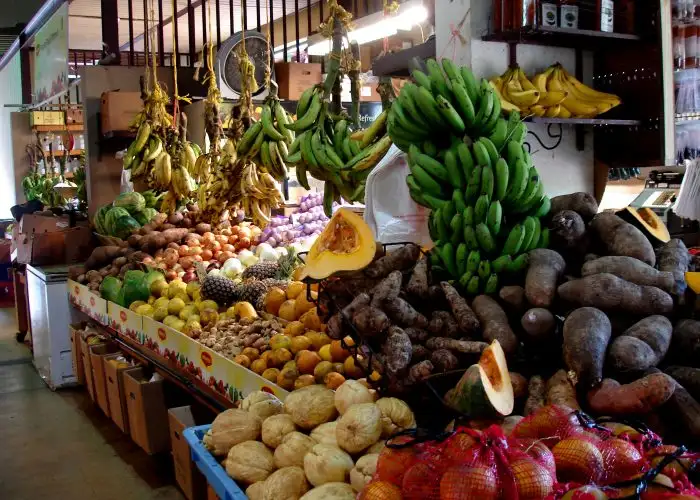
Long home to the Santurce market in San Juan, La Placita de Santurce is a good place to get a sense of both traditional Puerto Rican life and its newer, hipper version. During the day, it’s the spot for locals to buy fruits and vegetables, and for tourists to pick up handicrafts.
But in the evenings and on weekends, a younger crowd moves in for the bar and restaurant scene, and an improvised open-air celebration fills the streets with dancing and merrymaking.
More from SmarterTravel:
- Do I Need a Passport to Go to Puerto Rico?
- 5 Best Puerto Rico All-Inclusive Resorts and Hotels
- 10 Best Puerto Rico Beaches
We hand-pick everything we recommend and select items through testing and reviews. Some products are sent to us free of charge with no incentive to offer a favorable review. We offer our unbiased opinions and do not accept compensation to review products. All items are in stock and prices are accurate at the time of publication. If you buy something through our links, we may earn a commission.
Related
Top Fares From
Today's Top Travel Deals
Brought to you by ShermansTravel
Shop and Save with Country Inns...
Patricia Magaña
 Hotel & Lodging Deals
Hotel & Lodging Deals
$229 -- Chicago: Discounted Rates and...
Francesca Miele
 Hotel & Lodging Deals
$229+
Hotel & Lodging Deals
$229+
$188 -- Honolulu: Save on Oceanview...
Abigail Lamay
 Hotel & Lodging Deals
$188+
Hotel & Lodging Deals
$188+
